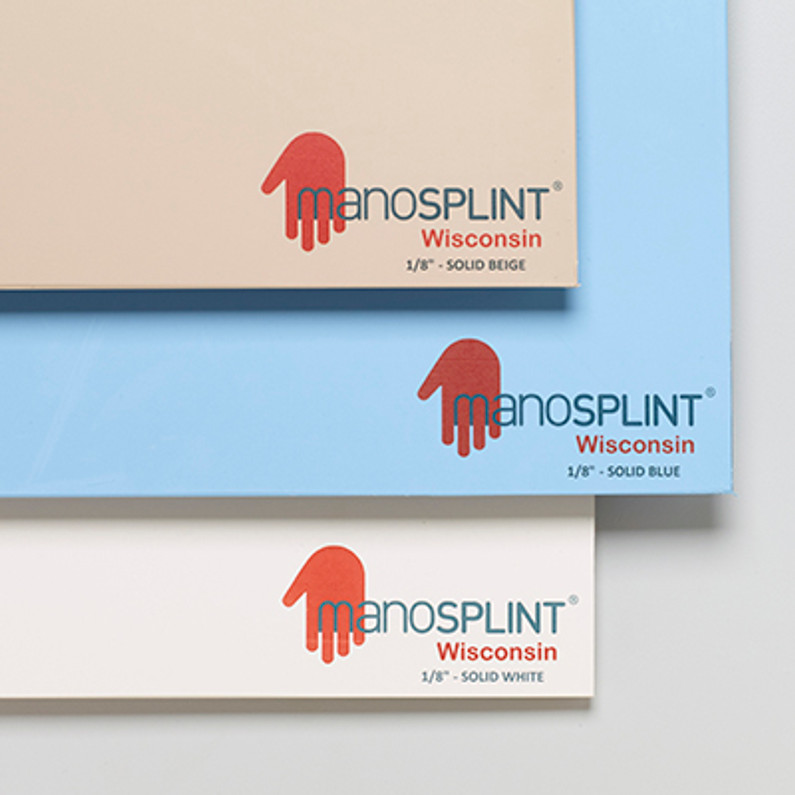A Guide to Understanding Manosplints
Manosplints are indispensable tools, offering tailored support and therapeutic intervention for various hand and wrist conditions. These custom-made orthoses play a pivotal role in hand therapy, aiding in the recovery process, and promoting optimal function. Let's talk about different manosplints and explore their diverse uses and the distinct characteristics of popular variants like Manosplint Ohio, Manosplint Carolina, and Manosplint Wisconsin.
Understanding Manosplints
Manosplints, also known as hand splints, are orthopedic devices fabricated from thermoplastic materials, meticulously shaped to conform to the unique contours of an individual's hand and wrist. These custom splints are prescribed by healthcare professionals, typically physical therapists or occupational therapists, to address a myriad of hand-related conditions, ranging from traumatic injuries to chronic disorders.
Manosplints Uses
Manosplints serve multifaceted purposes in hand therapy, including:
- Immobilization and Stability: Following injuries such as fractures, sprains, or post-operative procedures, manosplints provide essential support and immobilization, facilitating the healing process and preventing further damage.
- Correction of Deformities: Manosplints are instrumental in correcting or preventing hand deformities resulting from conditions like arthritis, contractures, or neurological disorders. By maintaining proper alignment and encouraging functional movement. In essence, they help mitigate deformity progression.
- Support in Functional Activities: For individuals with compromised hand function due to conditions like stroke or nerve injuries, manosplints assist in performing daily tasks by providing external support and facilitating proper hand positioning.
- Pain Management: Manosplints can alleviate pain associated with various hand and wrist conditions by stabilizing affected joints, reducing strain on injured tissues, and promoting optimal alignment during movement.
- Therapeutic Stretching: In cases of contractures or limited range of motion, manosplints are used to apply controlled stretching forces over time, gradually restoring flexibility and improving joint mobility.
Exploring Different Types of Manosplints
- Manosplint Ohio: Renowned for its versatility, Manosplint Ohio offers a range of options tailored to specific therapeutic needs. Variants like Ohio, Ohio S, and Ohio F provide varying degrees of rigidity, coating options, and fabric coverings, catering to diverse patient requirements.
- Manosplint Carolina: Characterized by its exceptional resistance to stretching and rigidity, Manosplint Carolina is ideal for applications requiring robust support and durability. With options for thickness and perforation levels, it offers precise customization for optimal therapeutic outcomes.
- Manosplint Wisconsin: Striking a balance between stretch resistance and rigidity, Manosplint Wisconsin features a non-stick coating to prevent adhesion to other materials. This variant offers versatility with options for perforation and thickness, catering to individual preferences.
Manosplints are a cornerstone of hand rehabilitation, offering tailored solutions for a wide spectrum of hand and wrist conditions. From providing stability and support to facilitating therapeutic stretching and pain management, manosplints play a vital role in promoting recovery and enhancing quality of life for individuals undergoing hand therapy. With diverse options like Manosplint Ohio, Manosplint Carolina, and Manosplint Wisconsin, clinicians have versatile tools at their disposal to address unique patient needs and achieve optimal therapeutic outcomes in hand rehabilitation.
Related Blog Posts:
Exploring the Utility of Medical Splinting Pans
Medical Splints and Supports: Enhancing Patient Care in the Medical Field
The Essential Role of Splint Pans in the Splinting Process
Recent Posts
-
What to Expect During Hand Therapy: A Guide for Patients and Caregivers
If you’re starting hand therapy—whether after surgery, a stroke, or a neurological …Apr 6th 2025 -
Improve Hand Function and Dexterity with the Neofect Smart Pegboard
The Neofect Smart Pegboard is a revolutionary tool in the field of occupational therapy. I …Mar 25th 2025 -
Overcoming Challenges in Sports Medicine Clinics: Tips for Success
Running a sports medicine clinic presents unique challenges that require a balance of clinical exper …Dec 2nd 2024



